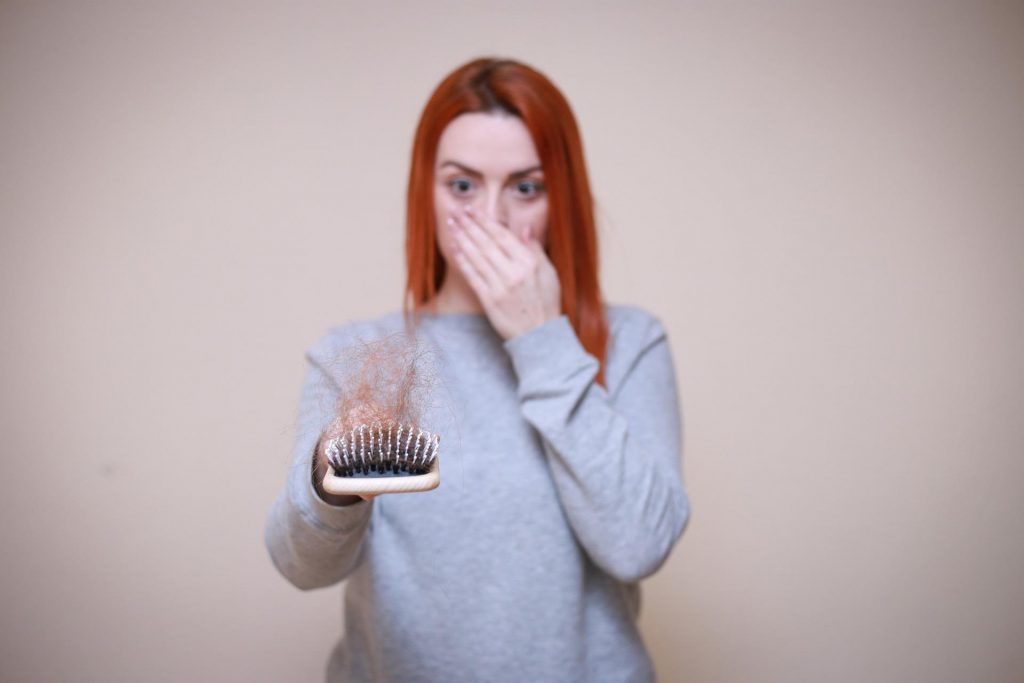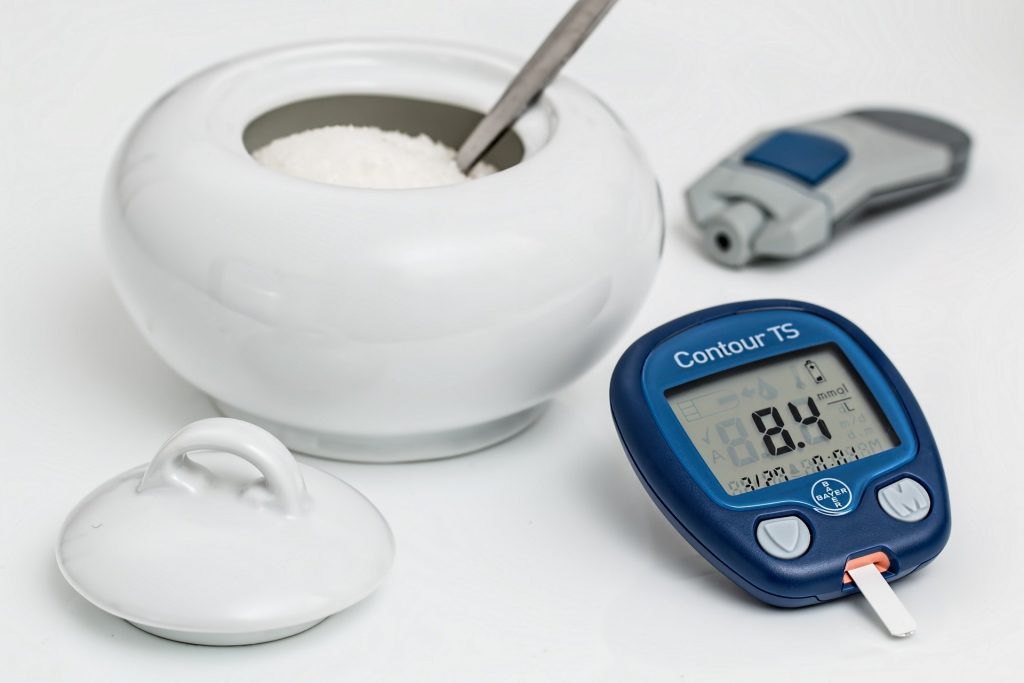Hair loss is one of the worrisome yet manageable complications Diabetes. This article explores its mechanism and how to manage it through professional and home-based remedies.

Every hair follicle on the body has its own unique and complex system. (1) This is why it may also be referred to as an end organ. The three primary types of hair follicles are known as:
- Terminal follicles: These follicles are primarily found on the scalp, underarms and genital areas.
- Sebaceous follicles: These follicles are mainly found on the face, chest and upper part of the back.
- Vellus follicles: These follicles make up the remaining hairy regions of the human body. (2) (3)
Hair growth in these follicles occurs through three main stages: Anagen Stage, Catagen Stage and Telogen Stage. The anagen stage is also known as the growth phase, and the catagen phase is also known as the regression stage, while the telogen phase is the primary resting stage of the hair growth cycle. (4) (5) The regulation of the hair cycle is considered a complex procedure, and disrupting any of the steps mentioned above can lead to hair weakening and hair loss. The factors which may affect the hair cycle include changes in hormones, altered growth factors and an unusual increase or decrease in neurotransmitters. One of the commonly known diseases which is associated with changes in hormones is Diabetes Mellitus causing hair loss known as Diabetic Hair Loss.
What is Diabetes Mellitus?
Diabetes Mellitus is a chronic condition which is associated with constantly high levels of glucose in the blood. This may either be caused by a lack of proper insulin production from the pancreas or the inability of the body’s cells to respond to the effects of insulin – a phenomenon also referred to as insulin resistance. The hyperglycemic condition of the body seen in diabetes myelitis can not only cause severe vascular impairments but may also cause follicular damage resulting in hair sparseness and reduction in hair growth. (6) (7)
How Does Diabetic Hair Loss Occur?

The exact mechanism through which diabetic hair loss occurs has been investigated in a number of studies conducted in recent years. The majority of the studies have shown a positive association between insulin resistance and a type of hair loss known as Androgenic Alopecia. Insulin resistance is a state of the body that is commonly seen in patients diagnosed with type 2 diabetes mellitus, also known as late-onset diabetes mellitus. Even though there has been a lot of debate amongst experts, the majority agree that insulin resistance in the body leads to microvascular damage, which eventually causes androgenic hair loss. (8) (9)
Moreover, the hair loss caused by diabetes mellitus is not only limited to the hair present on the scalp but may also occur on those found in other parts of the body – including the lower limbs. One such cohort study revealed at least 26.6% of the individuals with diabetes mellitus type 2 suffer from hair loss below their knees. This was proposed to be due to a peripheral arterial disease caused by their diabetic state. (10)
Management of Diabetic Hair Loss

The first step to managing Diabetic hair loss involves the management of the primary causative factor that is causing the hair loss – Diabetes. In addition to the management of blood sugar levels, the individual may also benefit by taking nourishing supplements and PRP injections to restore their hair volume and prevent further hair loss. In extreme cases, the individual may also be recommended to undergo hair transplant surgery.
Managing Glucose Levels For Diabetic Hair Loss
As mentioned above, elevated glucose levels eventually cause microvascular and follicular damage and interruption of the hair cycle. Hence, by keeping the glucose levels within normal limits, Diabetic hair loss can be avoided and treated altogether. According to the American Diabetes Association, an individual must keep their HbA1c levels at or below 7 to see improvements in their overall health. This will protect them from further diabetic complications, including diabetic hair loss.
While taking the recommended dosages of insulin or glucose-lowering drugs is mandatory, there are some other practices that an individual may follow to keep their glucose levels in check. Exercise is considered one of the most effective ways to improve oxygen delivery to all parts of the body and bring sugar levels down. Some examples of everyday exercises that individuals may follow to manage their sugar levels include swimming and walking. Performing yoga and weight lifting. It is crucial to check the sugar levels before and after performing the exercise when you are starting out in order to prevent the levels from getting too low.
Supplements For Diabetic Hair Loss
The most common supplements that may be prescribed for the early management of diabetic hair loss are biotin supplements. Biotin is essentially a complex of vitamin B, which is known for its positive effects on the hair and nails of an individual. Taking Biotin supplements after discussing with the health care professional can potentially increase the rate of hair growth and help the individual regain the lost hair volume.
PRP Injections For Diabetic Hair Loss
PRP stands for platelet-rich plasma, which is liquid that is processed from the patient’s own blood. It is amongst the most popular current treatments for the treatment of mild to moderate cases of hair loss. After drawing the patient’s blood, it is processed in a centrifuge machine, and the resulting plasma is extracted in syringes. These are then injected into the patient’s scalp with the aim of targeting their hair follicles. (11)
Hair Transplant Surgery For Diabetic Hair Loss
Individuals with extensive hair loss, which can no longer be restored with non-invasive procedures, may opt for hair transplant surgery. Hair transplant surgery, which is also known as hair restoration surgery, is conducted by a cosmetic physician in an in-office setup. It is a lengthy and extensive procedure and may take a number of days for recovery. Even though it does not require the patient to be hospitalized and they are free to go at the end of the procedure, there are certain precautions that they are instructed to take for several days following the procedure. Common side effects include bruising, bleeding and swelling at the site of the surgery.
The Bottom Line
Diabetes on its own can be a huge challenge for any individual encountering it, but the complications like hair loss only add to the discomfort. While many remedies are available to prevent and treat diabetic hair loss, the most important one is targeting the primary causative factor – diabetes mellitus. This can be achieved by taking the right dosage of prescribed medication at the right time and adopting a healthy lifestyle.
References
- Rishikaysh, P., Dev, K., Diaz, D., Qureshi, W. M., Filip, S., & Mokry, J. (2014). Signaling involved in hair follicle morphogenesis and development. International journal of molecular sciences, 15(1), 1647–1670. https://doi.org/10.3390/ijms15011647
- Sperling L. C. (1991). Hair anatomy for the clinician. Journal of the American Academy of Dermatology, 25(1 Pt 1), 1–17. https://doi.org/10.1016/0190-9622(91)70167-z
- Piérard, G. E., Piérard-Franchimont, C., Marks, R., Elsner, P., & EEMCO group (European Expert Group on Efficacy Measurement of Cosmetics and other Topical Products) (2004). EEMCO guidance for the assessment of hair shedding and alopecia. Skin pharmacology and physiology, 17(2), 98–110. https://doi.org/10.1159/000076020
- Andl, T., Ahn, K., Kairo, A., Chu, E. Y., Wine-Lee, L., Reddy, S. T., Croft, N. J., Cebra-Thomas, J. A., Metzger, D., Chambon, P., Lyons, K. M., Mishina, Y., Seykora, J. T., Crenshaw, E. B., 3rd, & Millar, S. E. (2004). Epithelial Bmpr1a regulates differentiation and proliferation in postnatal hair follicles and is essential for tooth development. Development (Cambridge, England), 131(10), 2257–2268. https://doi.org/10.1242/dev.01125
- Paus, R., Christoph, T., & Müller-Röver, S. (1999). Immunology of the hair follicle: a short journey into terra incognita. The journal of investigative dermatology. Symposium proceedings, 4(3), 226–234. https://doi.org/10.1038/sj.jidsp.5640217
- Xiao, Y., Woo, W. M., Nagao, K., Li, W., Terunuma, A., Mukouyama, Y. S., Oro, A. E., Vogel, J. C., & Brownell, I. (2013). Perivascular hair follicle stem cells associate with a venule annulus. The Journal of investigative dermatology, 133(10), 2324–2331. https://doi.org/10.1038/jid.2013.167
- Hayashi, S., Miyamoto, I., & Takeda, K. (1991). Measurement of human hair growth by optical microscopy and image analysis. The British journal of dermatology, 125(2), 123–129. https://doi.org/10.1111/j.1365-2133.1991.tb06058.x
- Matilainen, V., Koskela, P., & Keinänen-Kiukaanniemi, S. (2000). Early androgenetic alopecia as a marker of insulin resistance. Lancet (London, England), 356(9236), 1165–1166. https://doi.org/10.1016/S0140-6736(00)02763-X
- Goldman, B. E., Fisher, D. M., & Ringler, S. L. (1996). Transcutaneous PO2 of the scalp in male pattern baldness: a new piece to the puzzle. Plastic and reconstructive surgery, 97(6), 1109–1117. https://doi.org/10.1097/00006534-199605000-00003
- Chatterjee, N., Chattopadhyay, C., Sengupta, N., Das, C., Sarma, N., & Pal, S. K. (2014). An observational study of cutaneous manifestations in diabetes mellitus in a tertiary care Hospital of Eastern India. Indian journal of endocrinology and metabolism, 18(2), 217–220. https://doi.org/10.4103/2230-8210.129115
- Gentile, P., Garcovich, S., Bielli, A., Scioli, M. G., Orlandi, A., & Cervelli, V. (2015). The Effect of Platelet-Rich Plasma in Hair Regrowth: A Randomized Placebo-Controlled Trial. Stem cells translational medicine, 4(11), 1317–1323. https://doi.org/10.5966/sctm.2015-0107